From the pandemic COVID-19, cyclones, plane crash and more this seems like the year 2020 is the one humans were always warned off
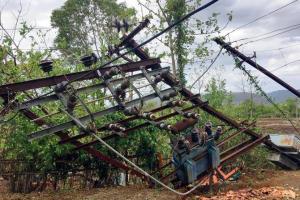
The destruction caused in Raigad by severe cyclonic storm Nisarga
When people bid adieu to 2019 and welcomed 2020 with a joyful heart, no one imagined that this year shall be regarded as one of the catastrophic years for not just India, but the whole world. From the most deadly virus ever known to mankind to locust attack, from floods and landslides in several states to plane crash, this seems like the year that humans were always warned of.
Here are some of the deadliest disasters that happened in India in 2020 so far.
Coronavirus
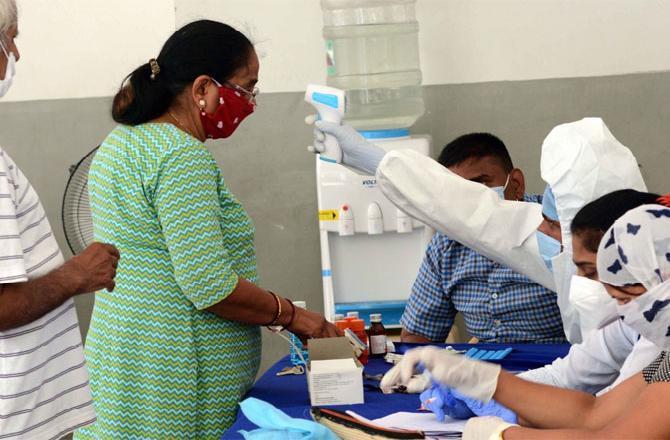
A health worker checks the body temperature of a woman.
COVID-19, the deadliest virus that the humankind has ever witnessed, started from China's Wuhan city in December 2019. First case surfaced in Kerala's Thrissur district in January end, when a student, studying in Wuhan university, returned to India. He was part of the group of Indian citizens that were airlifted from China. In February, Kerala declared COVID-19 as a state calamity. In February end, India conducted the final airlift from Wuhan, bringing back 759 Indians.
In March, India started screening all international passengers across the airports and World Health Organisation (WHO) also declared COVID-19 as a pandemic. On March 12, India reported its first death. A 76-year-old man from Karnataka's Kalburgi district became the first victim of the virus. The same day, India also banned the entry of foreigners for a month and suspended all visas.
On March 25, Prime Minister Narendra Modi announced a nationwide lockdown till April 14, which was further extended till May 3. On May 1, the Union government announced that the lockdown has been extended till May 17. By mid-May, India with over 85,000 cases surpassed China's total number of cases reported. On May 17, the lockdown was further extended till May 31.
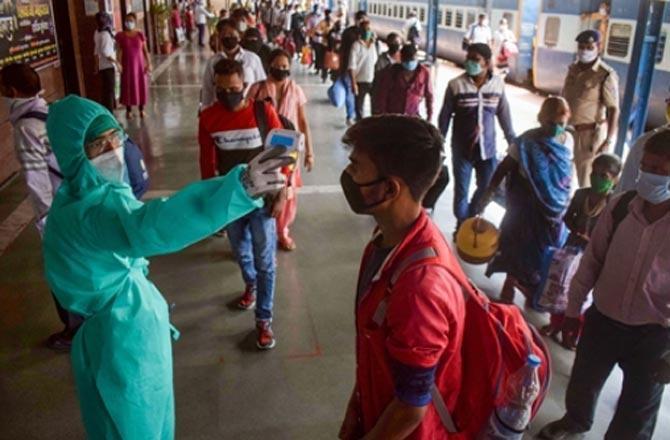
Migrant labours undergo thermal screening at Dadar railway station, in wake of the coronavirus pandemic, in Mumbai. Pic/PTI
After 75 days of lockdown and with over 2.5 lakh cases and 7,200 deaths, India started reopening the country in a phased manner from June 8.
On Saturday, India's COVID-19 tally stood at 29,75,701, while the number of recoveries surged to over 15 lakh. The death-toll climbed to 55,794, according to Union Health Ministry data.
Cyclone Amphan
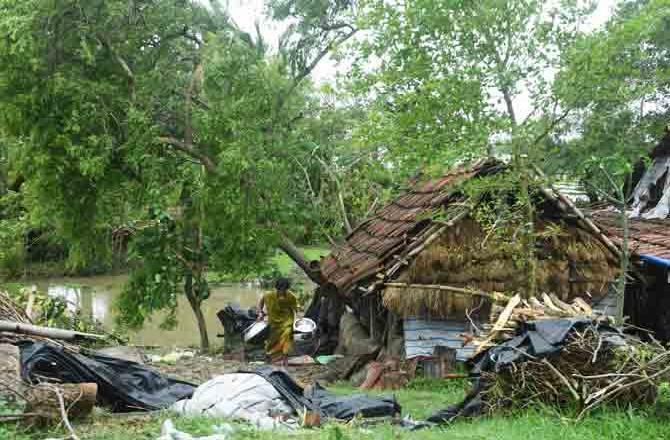
A woman salvages items from her house damaged by cyclone Amphan in Midnapore, West Bengal. Pic/ AFP
While India was battling with pandemic, a super cyclone Amphan created havoc in West Bengal and Odisha in May. Amphan was a tropical cyclone that caused widespread damage in eastern India and Bangladesh.
It originated from a low-pressure area persisting a couple hundred miles (300 km) east of Colombo, Sri Lanka, on 13 May 2020. It was said to be the fiercest cyclone to hit in 100 years. It triggered heavy rainfall, coupled with high-velocity winds while moving towards the West Bengal. As many as 72 people were killed in West Bengal.
A total of 1,48,486 people were evacuated from low-lying areas and thatched and mud houses, and accommodated in 2,921 cyclone shelters. Besides, 1,885 pregnant women were shifted to hospitals for better care. West Bengal Chief Minister Mamata Banerjee had said that the impact of Amphan was "worse than coronavirus".
Strong winds with speed of up to 133 kmph per hour had upturned cars in Kolkata. Uprooted trees and electricity poles blocked important roads and intersections. Mobile and internet services were also down as several communication towers were damaged. Streets and homes in low-lying areas of Kolkata were swamped with rainwater.
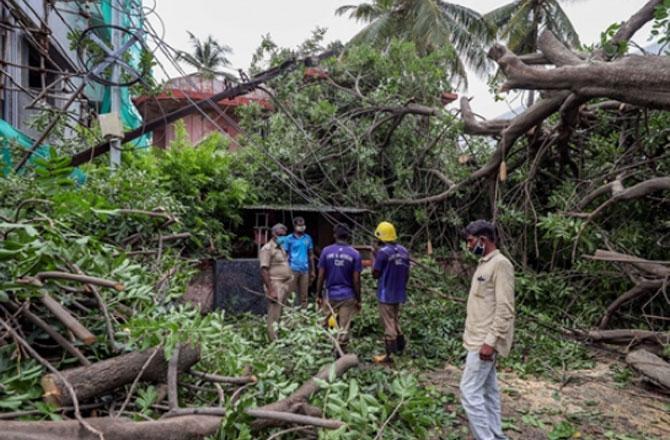
Cyclone Amphan gathered strength and intensified into a severe cyclonic storm over the Bay of Bengal. Pic/PTI
The National Disaster Response Force (NDRF) had sent teams for relief and rescue operations. In all, 21 NDRF teams were deployed in West Bengal and 20 were positioned in Orissa.
The state officials had said that the cyclone caused a damage of 1 trillion rupees to infrastructure and crops in West Bengal.
Locust attack
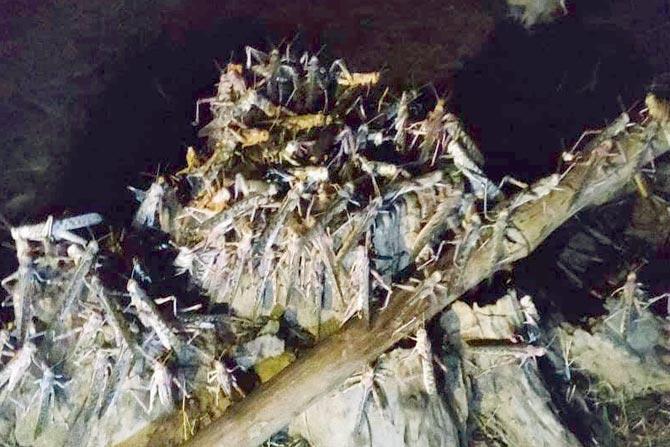
A locust nest on a mango tree in Bhandara district
Millions of desert locusts swarmed six states - Rajasthan, Gujarat, Punjab, Haryana, Uttar Pradesh and Madhya Pradesh – in May-June. It was said to be one of the worst pest attacks in over 2 decades. The locusts which entered India were about 10-12 days old and were flying huge distances in search of food.
As per reports, desert locusts are considered to be the most devastating migratory pests globally. A one square kilometre swarm contains about 40 million locusts. They can eat as much food as 35,000 people per day. The sudden increase in locusts has been credited to climate change. The increase in temperature has made it more habitable for breeding and swarming of these crop-devouring short-horned insects.
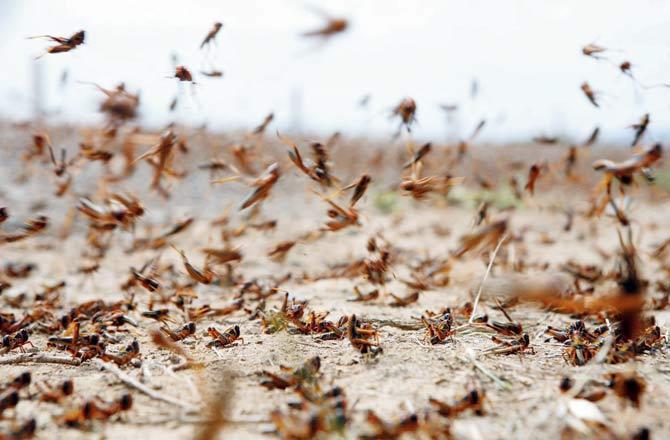
This picture has been used for representation purpose only
On April 30, the locusts initially flew across India-Pakistan border. They entered several districts of Rajasthan via Pakistan's Sindh province. On July 4, a bell helicopter took its first sortie in Rajasthan's Jaisalmer district and completed the spraying of chemicals in targeted areas. Few days later, they entered the neighbouring state of Madhya Pradesh and from there, they went to Uttar Pradesh.
On May 27, the locusts entered Maharashtra. The state government had estimated that approximately eight crore locusts had entered different parts of Maharashtra – including Amravati, Wardha and Nagpur. Insecticides were sprayed in various parts of Amravati as 10-15 lakh locusts had swarmed in the region. The locusts had damaged oranges orchards and vegetable plantations in some areas of Nagpur and Wardha districts in Maharashtra.
Cyclone Nisarga
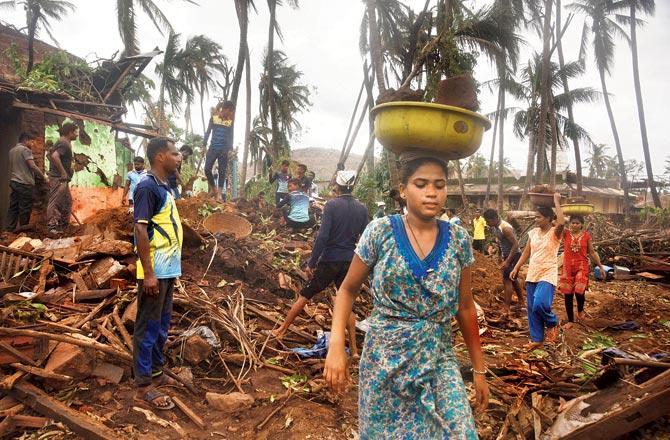
Villagers clear debris of a house destroyed in the June 3 cyclone at Ade village on Friday. Pic/Atul Kamble
Cyclone Nisarga made landfall on the Maharashtra coast near Alibaug, a popular getaway about 100 km from Mumbai, on June 3. Alibaug reported wind speed of 93 km per hour. The tropical storm crossed the coast with wind speeds of 100-110 km per hour, gusting up to 120 km per hour.
In Mumbai, the Banda-Worli sea link was closed for traffic and in Maharashtra, more than 40,000 people were moved to safety. Forty-three teams of National Disaster Response Force (NDRF) were deployed along Maharashtra and Gujarat coasts. Life guards were deployed at all beaches from Girgaon to Gorai with jet keys and other safety devices.
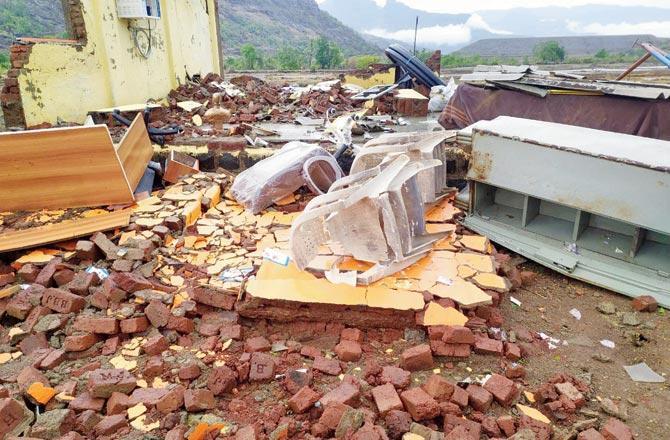
One of the many houses damaged in Nizampur
Mumbai made a narrow escape from the cyclone, but certain areas of Mumbai Metropolitan Region (MMR), Navi Mumbai and Thane were affected. Power outages were reported in few areas and tree felling incidents took place in several parts of the city due to the strong winds that came with the cyclone.
Alibaug, Raigad and Palghar were the most affected areas in the state. Many households, infrastructures and local businesses were hit by the massive cyclone.
On June 5, Maharashtra Chief Minister Uddhav Thackeray visited Raigad to take stock of the situation and announced an initial aid of Rs 100 crore. In the first week of August, 100 per cent power restoration work was completed in Raigad district.
Mumbai floods
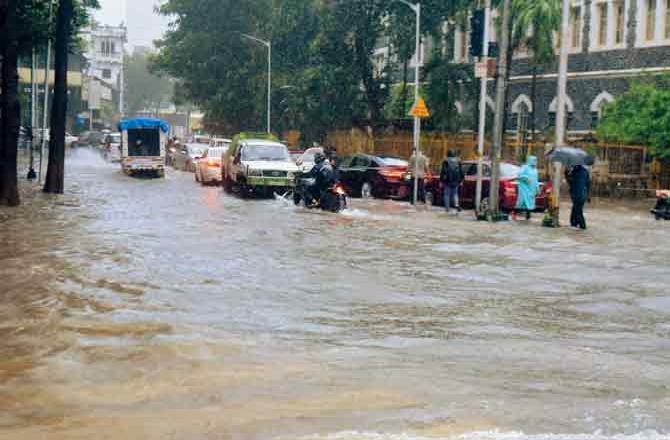
A waterlogged Girgaon Chowpatty on Wednesday. Pic/ Bipin Kokate
Mumbai witnessed incessant rainfall on August 4-5 bringing back the memories of 2005 floods in the city. Waterlogged roads, uprooted trees and abandoned cars added to the traffic mayhem. Train and bus services were also suspended and passengers from stranded local trains were rescued by NDRF teams.
Large parts of south Mumbai were inundated after the city recorded its heaviest single-day downpour in August in 46 years with 293.8 mm of rainfall. Areas like Churchgate, Marine Drive, Fort, Girgaum, Khetwadi, Walkeshwar Road, J J Marg, Gol Deol, Bhendi Bazaar, Kalbadevi were flooded and water entered several houses.
A 35-year-old woman and her two children were swept away in a swollen drain after their house in Santacruz collapsed due to heavy rain. The woman and her three children, aged between one to seven years, fell into the flooded drain and were swept away. While the police managed to rescue a two-year-old girl, the bodies of woman and her two other children were retrieved later.
Incidents of house collapse were also reported from various parts of the city.
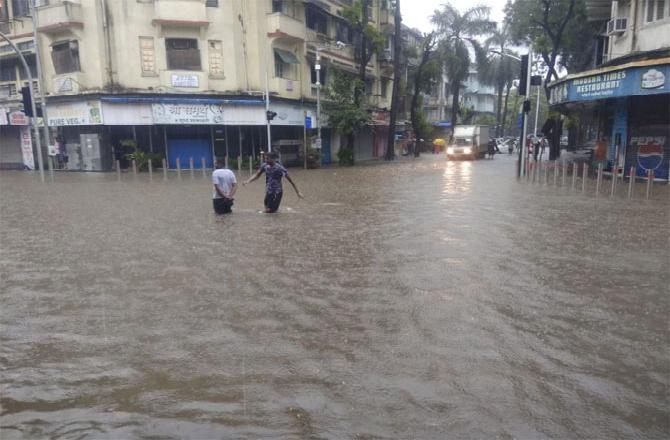
People wade through flooded streets at Hindmata near Dadar. Pic: Suresh KK
The Western Railway had announced on Twitter that due to heavy rainfall, all local train services between Churchgate and Mumbai Central stations have been temporarily suspended.
Maharashtra Chief Minister Uddhav Thackeray asked people to stay indoors and Brihanmumbai Municipal Corporation (BMC) opened temporary shelters in municipal schools to ensure that citizens do not face any hardships. Prime Minister Narendra Modi spoke to the Chief Minister and took stock of the situation in Mumbai and surrounding areas and assured all possible support.
Since years the situation has remained adverse in Mumbai during monsoons. Almost every year the suburban trains are affected and low-lying areas get flooded.
Assam floods
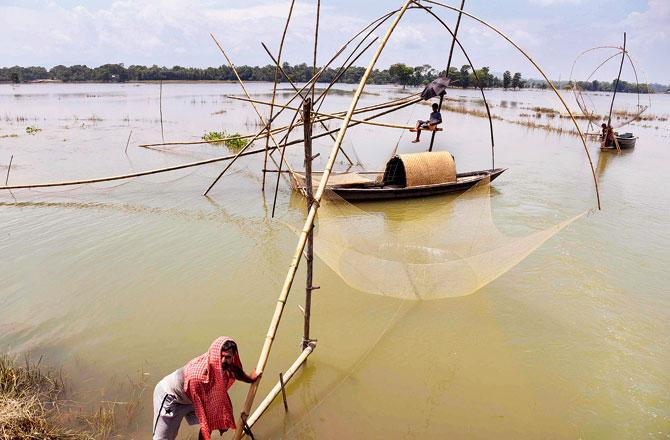
Villagers indulge in fishing in the flooded Pobitora Wildlife Sanctuary of Assam. Pic/PTI
Like previous years, this year too Assam has witnessed a devastating flood, which has so far killed 113 people and over 56.9 lakh got affected in 30 districts. The annual monsoon floods damaged crops, infrastructure and assets.
The flooded districts were Dhemaji, Lakhimpur, Sonitpur, Biswanath, Darrang, Baksa, Nalbari, Barpeta, Chirang, Bongaigaon, Kokrajhar, Dhubri, South Salmara, Goalpara, Kamrup, Kamrup Metropolitan, Morigaon, Nagaon, Golaghat, Jorhat, Majuli, Sivasagar, Charaideo, Dibrugarh, Tinsukia, West Karbi Anglong and Cachar.
A total of 208 relief camps were set up for thousands of people who were displaced in the deluge. Also, nearly 93,000 hectares of crop area in the state was inundated.
The animals too were not spared. These include the endangered rhinos in the world famous Kaziranga National Park, home to more than 2,200 one-horned Indian rhinos.
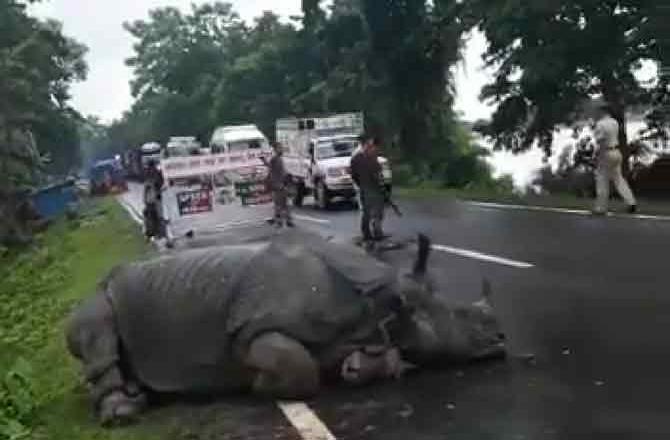
A screengrab of the video shared by Kaziranga National Park and Tiger Reserve on Twitter
This year at least 137 wild animals lost their lives due to the floods, while 163 were rescued, as over 95 per cent of the 884 sq km Kaziranga Park was flooded. The animals that have perished in the monsoon floods this year include 14 rhinos, 101 hog deer, ten wild boars, five wild buffaloes, three porcupines and two swamp deer.
Each year, the monsoon floods inundating Kaziranga force a large number of wild animals to leave the park and head towards the nearby hills in Karbi Anglong district by crossing National Highway-37 that passes near the park's boundary.
Formed in 1908, the Kaziranga National Park, a Unesco World Heritage site since 1985, is home to more than 2,200 one-horned Indian rhinoceros, approximately two third of the total world population.
With the respite in the monsoon rains, the two-month long Assam floods significantly improved in the first week of August.
Landslide in Kerala's Idukki
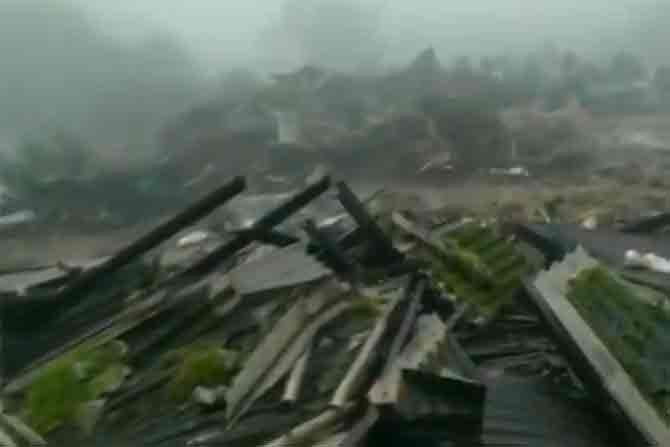
The destruction caused due to landslide in Idukki's Rajamala, Kerala. Pic/ ANI Twitter
On August 10, tea estate workers in Kerala's Idukki district woke up to a massive landslide that claimed 55 lives and 15 are still missing. The landslide that occurred about 30 km from the popular tourist destination of Munnar flattened 20 housees.
Four rows of estate workers' houses attached to the Tata Tea estate were completely destroyed in the landslide. In all there were said to be 73 people residing in those houses.
A 200-member team of Kerala Police had reached the spot for rescue work. The women residents of the locality work in tea estates in the area, while most men work as jeep drivers.
The Kerala government's efforts to get an air rescue team to the spot had failed due to inclement weather. The roads to the hilly area were blocked due to the uprooting of trees.
While the Kerala government has announced an ex gratia of Rs 5 lakh each to the bereaved families, Prime Minister Narendra Modi has announced Rs 2 lakh for each family from Prime Minister's National Relief Fund (PMNRF).
Kozhikode plane crash

The Air India Express aircraft broke into two pieces after the crash. Pic/ AP
On August 7, an Air India Express plane skidded while landing at Karipur Airport in Kozhikode, leaving 18 dead - including the two pilots - and over 100 others injured.
The Air India Express aircraft - carrying 190 persons, including six crew members - was flying in from Dubai. It skidded off the runway while landing amid heavy rain in Kozhikode and plunged into the deep valley below.
The flight was repatriating Indian nationals stranded abroad due to the COVID-19 pandemic as part of the Vande Bharat Mission. One of the 18 passengers, who died in the plane crash, had tested positive for COVID-19.
The Kozhikode airport in Kerala has a table-top runway and is operated by the Airports Authority of India (AAI). Generally, table-top runways are constructed on a hilly or an elevated terrain.
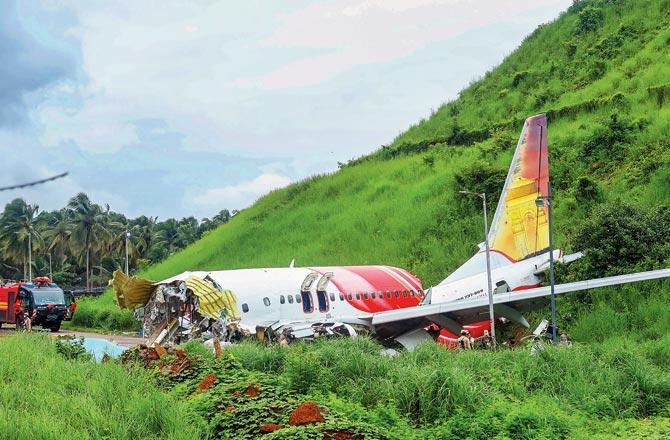
The debris of the Air India Express flight that skidded off a runway while landing. File pic/AP
The central government had announced a compensation of Rs 10 lakh to the kin of each deceased and Rs 2 lakh for those with serious injuries. Union Civil Aviation minister Hardeep Singh Puri had announced Rs 50,000 as compensation for those who suffered minor injuries.
Air Marshal (Retired) Bhushan Gokhale, who investigated the Mangalore plane crash, listed possible causes behind this plane tragedy. He said," Since it was raining heavily in Kerala. The accumulation of rainwater on the runway surface in the rainy season is the riskiest thing. Rubber in the plane tires melts while landing and that's why smoke comes out. In this case, if the water is on the runway, there will be a problem while landing."
As per an official, the plane was owned by the airline and not a leased one, so it will get the entire claim of $50 million.
Keep scrolling to read more news
Catch up on all the latest Mumbai news, crime news, current affairs, and a complete guide from food to things to do and events across Mumbai. Also download the new mid-day Android and iOS apps to get latest updates.
Mid-Day is now on Telegram. Click here to join our channel (@middayinfomedialtd) and stay updated with the latest news
 Subscribe today by clicking the link and stay updated with the latest news!" Click here!
Subscribe today by clicking the link and stay updated with the latest news!" Click here!









